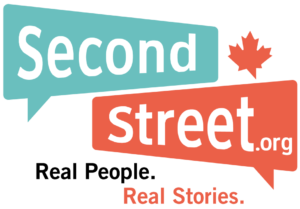Documentary: Health Reform Now
Reference Materials – Health Reform Now
Health Reform Now includes citations from a number of sources in each section. If you would like to review those materials, please see the links below.
Part 1: Background
* 17,032 patients died on waiting lists between April 1, 2022 – March 31, 2023. The report and actual government data responses can be found here
* 931 Ontario patients died in 2022-23 while waiting for heart surgery – click here
* Rise in Ontario deaths while waiting for MRI/CT scans – click here and here
* 2021 Commonwealth Fund report – click here
* Commonwealth Fund wait times – click here
* Fraser Institute 2023 international health care system report – click here
* Canadian Institute for Health Information – government spending data – click here
* Waiting list data – Fraser Institute – click here
* Canada among the highest spenders in the world – click here
Solution – Activity-Based Funding
Activity-based funding is a policy that sees governments fund health facilities each time they provide a service to a patient. This differs from the current standard practice in Canada that sees hospitals provided with an annual cheque each year (referred to as global budgeting).
Activity-based funding incentivizes hospitals to help more patients as it means they receive more funding. They no longer look at patients as people they have to treat, but rather as people they want to treat as it results in more funding.
The sources cited in this section of the documentary include:
* $2 million in losses at the Windsor Hospital’s government-run Tim Hortons – click here
* Montreal Economic Institute reports on activity-based funding – click here and here
* Fraser Institute reports on activity-based funding – click here and here
* Quebec statistics on using activity-based funding (referred to as patient-based funding) – click here (See B.12)
Solution – Partner with Private Clinics
Governments around the world, including in Canada, have shown that it can be more effective to contract non-profit and private health facilities to deliver care to patients,
rather than delivering care through government-run facilities.
* Ontario’s Auditor General report on partnering with private clinics – click here
* Saskatchewan government’s data on partnering with private clinics – click here
* Privately-run Capio St. Goran hospital in Sweden – click here or here for an older report on this facility
Solution – Reimburse for Surgery Abroad
The “Cross Border Directive” allows EU patients to travel to other EU countries for treatment, pay for it, and then receive reimbursement for up to the same cost their
government would have spent to pay for surgery locally.
* SecondStreet.org policy brief on the Cross Border Directive – click here
Solution – Choose to Use Public or Private
No other developed nation on the planet bans patients from choosing private options outside of the public system.
Sweden, France, Australia, the list goes on and on – it is common for developed nations to provide universal public systems and allow non-government options outside of that system. If Canada followed suit, most people would continue to use the public system, but some would choose private options. When this occurs, it would take pressure off the public system.
Sources in this section include:
* 2005 Supreme Court of Canada decision – click here
* Supreme Court refuses to hear challenge seeking to allow patients outside of Quebec to choose between public or private options – click here
* Ontario nurses working in Michigan – click here
Solution – Prevention
If Canadians lived healthier lives, there would be less stress on the health care system in the first place.
To be sure, many Canadians are coping with diseases and health problems that are genetic. But a good portion of provincial health resources are used to assist patients with entirely preventable health problems.
Sources cited in this section include:
* Heart and Stroke Foundation – “almost 80% of premature heart disease and stroke can be prevented through healthy behaviours” – click here
* Canadian Cancer Society – “About 4 in 10 cancer cases can be prevented through healthy living and policies that protect the health of Canadians.” – click here
* Statistics Canada – “According to the World Health Organization, 1 in 10 adults worldwide have diabetes, and most patients (90% to 95% of cases) have type 2 diabetes, which can be prevented (or at least delayed) through behavioural and lifestyle changes.” – click here
* Sweden’s Physical Activity as a Prescription (PAP) program – click here
Conclusion
Sources cited in the conclusion of the documentary include:
* Federal government reducing funds to provinces that allow patients to pay for diagnostic scans – click here
* Ontario governments seeks ban on allowing patients to pay for care at private nurse practitioner clinics – click here
* B.C. government allows drug smoking in hospitals – click here
* B.C. government fights against giving patients choice between using the public system or private options – click here


